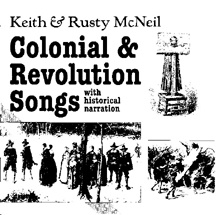
(845) 246-6944
· info@ArtTimesJournal.com
 |
The Search for the American Sound – 1
By
FRANK BEHRENS
ART TIMES March 2007
When
did American music become American? There are several answers, some
absolutely assured, some a bit more tentative. In this miniseries, we
will consider music in America even before composers began the search
for the American sound.
In the beginning, the music of America was the music
of those parts of Europe from which came all sorts of people to these
shores. What is now Massachusetts rang out with the fervent sounds of
“The Whole Booke of Psalms Faithfully Translated into English Meter”
(1640). Since musical instruments were not allowed in church, the leaders
were often hard pressed to keep the pitch and even the tunes, as they
should be.
After 1700, organs began to be shipped over the Atlantic.
At first they were little used, not because the congregations did not
want them but because the leaders were reluctant to introduce anything
that was new. The idea that the vocal lines should be printed along
with the psalms met even more opposition, mainly because some of the
Italian annotations were considered blasphemous. By 1720, this ban was
relaxed a bit.
As more and more instruments were imported, singing
and then dancing became acceptable to a degree. In fact, concerts began
to be given, the earliest on record being played in the late 1720s.
Five shillings would purchase a ticket for a Boston concert in 1731.
By 1754, Boston had its own concert hall and by 1762 South Carolina
had its first music society. What was played there was, of course, what
was being played in similar venues in Europe, allowing for the time
it took for the latest compositions to arrive and find their ways down
the colonies.
Among the Dutch, Swedish and other non-English enclaves,
music was played to please more eclectic tastes, but the influence was
almost non-existent. For example, the music of the Moravians in Bethlehem,
Pennsylvania sounded very much in the tradition of Bach—hauntingly
lovely melodies in a powerful religious context. However, the Moravian
influence on outside composers was nil.
In 1730, Benjamin Franklin published a collection of
hymns, some of which are the earliest examples of music composed in
America. However, they could not be distinguished from the European
entries in any way.
Although some attempts at American opera had taken place,
by far the most popular work was the ballad opera “The Beggar’s Opera”
by John Gay. This set the style for early American “musicals”: plays
in which new lyrics were grafted onto familiar tunes, such as Handel’s
“Hail, the conquering hero comes.” Part of the fun was letting the audience
identify the original titles and composers, not too unlike a performance
today by PDQ Bach!
Homegrown composers included Francis Hopkinson (1737-1791),
James Lyon (1734-1794), and William Billings (1746-1800). The new nation
desperately needed heroes when the old English ones would not serve.
Since King Arthur defended his country from the invaders of the north,
we would glorify George Washington. Indeed, Washington’s early portraits
show him realistically if a bit romanticized in military dress. After
the Revolution, he was shown in full Roman style with garlands around
his head and a consort of heavenly figures in the Baroque style.
Such visuals need music to match and men like Hopkinson
were quick to respond with paeans in the Handelian style. American subjects;
European music. How could it be otherwise?
With perfect Orwellian doublethink, as we moved into
what is known as the Federalist period and continued to take over the
land from the “savages,” we would still praise their nobility in songs
like “The Death Song of the Cherokee Indians” (1787) with elevated lyrics
that would not be out of place in a Dryden heroic play, which was then
all the rage in England.
A German immigrant named Philip Phile composed “The
President’s March” around 1793; and it stands as a rare example of music
still played today, but with the added lyrics that begin “Hail, Columbia,
happy land.” It is, of course, in the good old Prussian military style.
So while American composers were conscious of the need
for an American sound, they had no idea of how to find one. Writing
about American subjects helped a little. However, it would take more
intellectual intercourse with the other groups who did not live in Boston
or South Carolina and whose songs were not those of the English theater
or churches. It would take another 100 years, but the experiments along
the way are fascinating to behold.
(Recommended recordings: From New World
records, “The Birth of Liberty: Music of the American Revolution” (80276-2),
“Music of the Federal Era” (80299-2), “The Flowering of Vocal Music
in America” (80467-2). From Telarc, “Lost Music of Early America: Music
of the Moravians” (CD80482). On an independent label, “The Music Master’s
Companion” and “The Second Companion,” R.P. Hale (halerp@cs.com). From
WEM (WEMCD503), “Colonial & Revolution Songs with historical narration.)